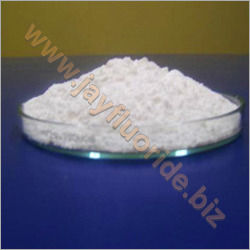Fluoroboric Acid
Product Details:
- Solubility Miscible with water
- Purity 48% w/w
- Appearance Colorless to slightly yellow liquid
- Product Type Inorganic Acid
- Molecular Formula HBF4
- Molecular Weight 87.81 g/mol
- Density 1.32 Gram per cubic centimeter(g/cm3)
- Click to View more
Fluoroboric Acid Price And Quantity
- 50 Kilograms
- 130 INR/Kilograms
- 130.00 - 135.00 INR/Kilograms
Fluoroboric Acid Product Specifications
- 87.81 g/mol
- Inorganic Acid
- HBF4
- Strong acid, colorless, hygroscopic, fuming, corrosive to most metals, highly soluble in water
- Colorless to slightly yellow liquid
- 28111990
- 48% w/w
- Industrial
- Store in tightly closed containers, ventilated area, away from water, alkalis, and metals
- Miscible with water
- Hydrogen, Boron, Fluorine
- 2 years (if stored properly)
- Pungent, irritating
- Acrid
- <1 (strong acid)
- YES
- [BF4]
- Liquid
- 1.32 Gram per cubic centimeter(g/cm3)
- Electroplating, metal cleaning, reagent for chemical synthesis, catalyst in organic reactions, glass etching
- Used as electrolyte in plating baths, catalyst, and cleaning agent
Fluoroboric Acid Trade Information
- 100 Kilograms Per Day
- 1 Week
Product Description
Considering our prolific experience and knowledge in this domain, we are counted amongst the most eminent manufacturers and suppliers of Fluoroboric Acid. We formulate this acid by making use of optimum quality components and advanced methodologies. We offer this acid in various compositions and strengths to meet with the demands of our clients. This range of acid is widely preferred by clients for its properties like precise pH value, accurate composition and purity. Fluoroboric Acid offered by us is widely used in metal plating, electro-polishing of aluminum and in chemical reactions as catalyst.
Specification:
- Molecular Formula : BF3.FH
- Molecular Weight : 87.81
- Appearance : colorless odorless poisonous liquid
- Mp : -90°C
- Bp : 130°C(dec.)
- Density : 1.38 g/mL at 20°C(lit.)
- Fp :40°F
- Water Solubility : Miscible
Further Details:
Fluoroboric Acid 20%, 45% & 50%
Product Details:
| Formula | HBF4 |
| Boiling point | 130 Degree C |
| Appearance | Colourless liquid |
| Melting point | - 90 Degree C |
| Molar mass | 87.81 g/mol |
| UN number | 1775 |
| Physical State | Liquid |
| Usage | Laboratory |
Versatile Industrial Application
Fluoroboric Acid is highly valued in various industries for its efficiency as an electrolyte, catalyst, and cleaning agent. Its strong acidic properties facilitate its use in electroplating baths, chemical synthesis, and as an etchant for glass and metals. Its high solubility ensures rapid integration in manufacturing processes.
Safety, Handling, and Storage
Due to its highly corrosive nature, Fluoroboric Acid must be stored in tightly closed HDPE containers or IBC tanks, away from metals, water, and alkalis. Proper ventilation is essential to prevent exposure to hazardous fumes. Follow established safety protocols when handling the acid to minimize health and environmental risks.
Environmental and Regulatory Considerations
Classified as hazardous (Hazard Class 8, UN 1775), Fluoroboric Acid presents risks to both human health and aquatic life. Prompt containment and appropriate disposal procedures are crucial in the event of spills. Adhering to storage and transport guidelines helps ensure regulatory compliance and environmental safety.
FAQs of Fluoroboric Acid:
Q: How should Fluoroboric Acid be stored to ensure maximum stability and safety?
A: Fluoroboric Acid should be stored in tightly sealed HDPE drums or IBC tanks, in a ventilated area away from water, strong alkalis, metals, and organic materials. Keep the storage area cool and dry to prevent decomposition and avoid contact with incompatible substances. Following these guidelines helps maintain its stability for up to two years.Q: What are the main industrial applications of Fluoroboric Acid?
A: Fluoroboric Acid is widely used in electroplating, metal cleaning, glass etching, and as a catalyst in organic chemical synthesis. Its strong acidic character and high solubility make it an ideal agent in these industrial processes, effectively supporting metal treatment and surface preparation.Q: When is Fluoroboric Acid preferred over other acids in manufacturing?
A: Fluoroboric Acid is chosen when a highly active, non-oxidizing, strong acid is neededespecially for reactions where a clean, efficient etchant or catalyst is required. Its use in electroplating and glass etching often provides superior results compared to alternative acids, especially when high solubility or specific reactivity is crucial.Q: Where does Fluoroboric Acid pose the highest risk to health or the environment?
A: High risk arises during handling, transport, and in the event of spills or accidental release into water bodies. Its corrosive action can cause severe injury to tissue and metals, and it is hazardous to aquatic life. All operations involving this acid should incorporate rigorous containment and emergency response plans.Q: What is the proper process for handling Fluoroboric Acid safely?
A: Always wear appropriate personal protective equipment, including acid-resistant gloves, safety goggles, and protective clothing. Work in well-ventilated areas and use acid-resistant tools and containers. Ensure that emergency washing facilities are accessible, and strictly avoid mixing with metals or strong alkalis to prevent dangerous reactions.Q: How does the use of Fluoroboric Acid benefit industrial operations?
A: The acids strong, stable, and non-oxidizing properties provide reliable performance in surface treatment, cleaning, and catalysis. It enhances the quality and efficiency of plating and etching processes, resulting in better product finishes and increased operational productivity.
Price:
- 50
- 100
- 200
- 250
- 500
- 1000+
Other Products in 'Industrial Fluorides' category
 |
JAYFLUORIDE PRIVATE LIMITED
All Rights Reserved.(Terms of Use) Developed and Managed by Infocom Network Private Limited. |









